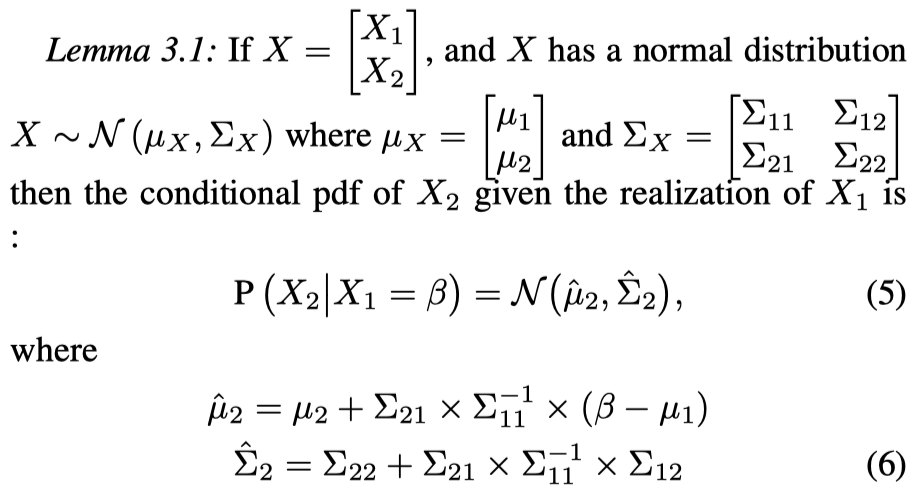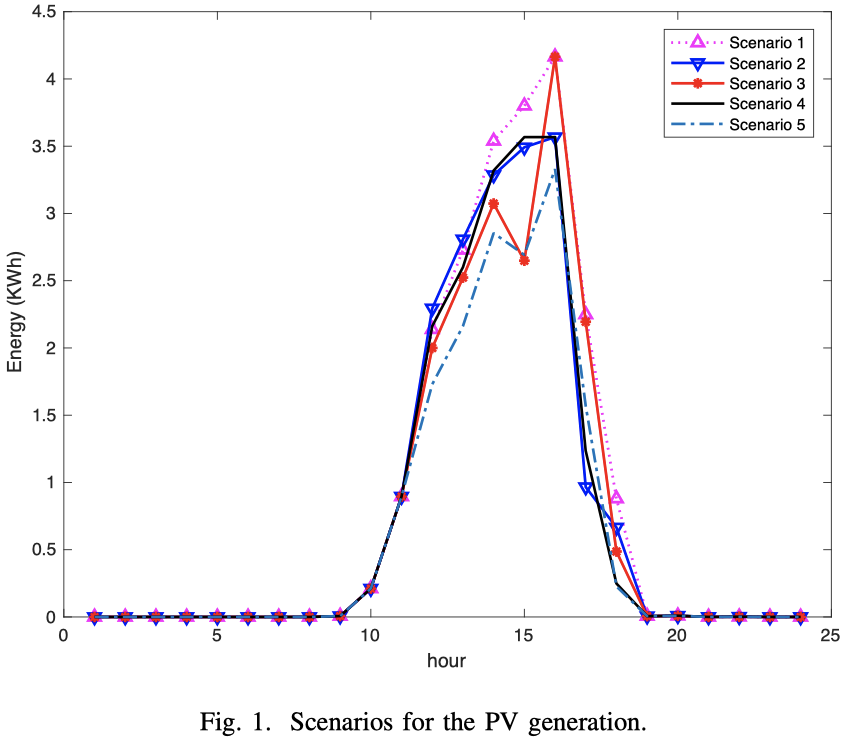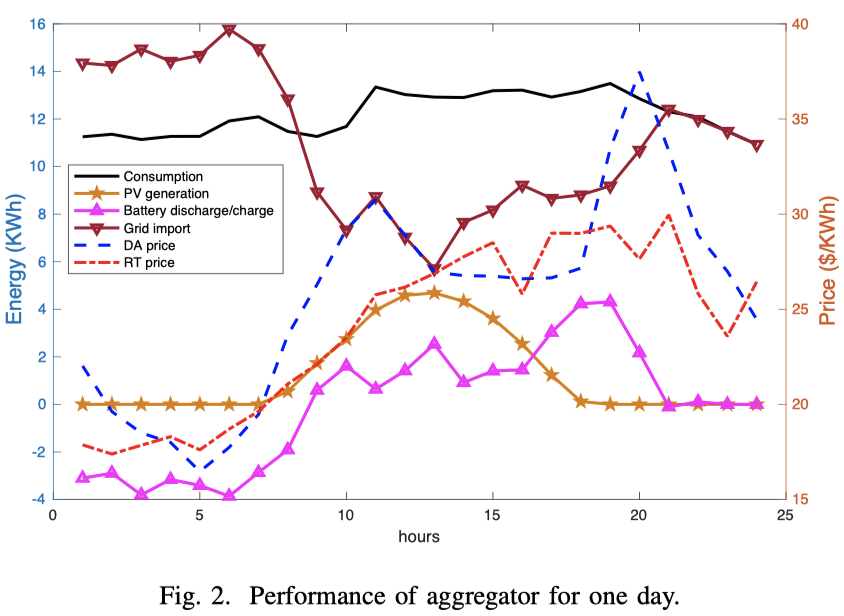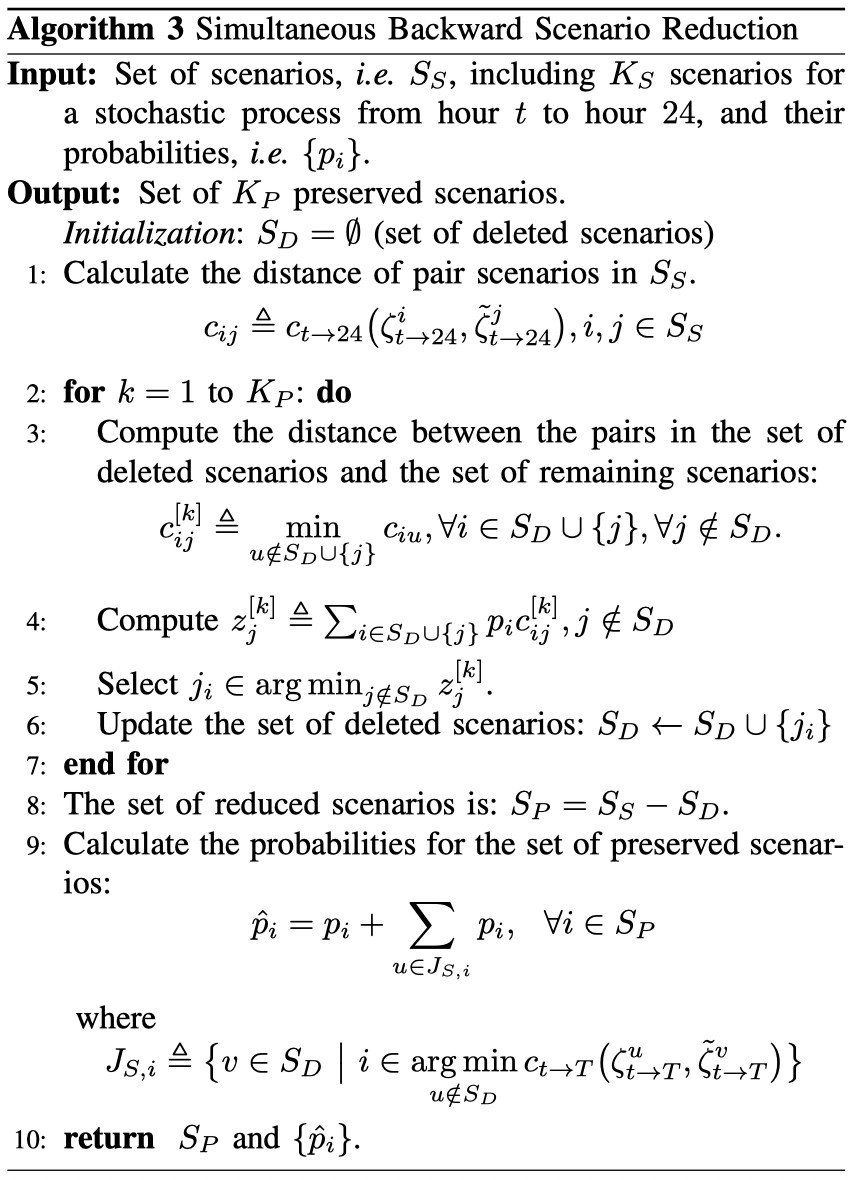Time-Series Forecast + Scenario Reduction + Stochastic Optimization for household with PV pandels and energy storage
Published:
Households are adding PV panels and energy storage to increase their capability in getting lower energy bills. In the following figure we can see a two-settlement market that the household will eventually buy power from.

This market consists of one Day-Ahead market (day -1), and 24 Real-Time markets (day 0). At any point, of time at day 0, the market price and power generation of the PV panel for that hours and previous hours are known, but the same variables are unknown for the coming hours.
The unknown variables are represented by scenarios. To generate scenarios, we first use CNN for the demand (to capture weekly trends in demand), and LSTM for market prices to give a single forecast for the unknown variables. For the benchmark, we used SARIMA to generate benchmark forecasts for the demand and market prices.
We then use the joint probability distribution funciton (pdf) of the forecast errors to generate the scenarios for the forecast errors, and add them to the single foreast generated by above mentioned forecasting algorithms to create the final scenarios. The pdf we used for the forecast errors is Gaussian pdf, which gives us computational power when calculating the conditional pdf given the new observations.
We then use Simultaneous Backward Scenario Reduction to decrease the number of scenarios while trying to keep the most important information in the scenarios unchanged. Then these scenarios are feed into a stochastic optimization problem to generate the optimal decisions.
As we progress into the day, new realizations for the market prices and for the PV power generations come into the light. By modeling the pdf of the forecast errors as a Gaussian pdf, we have a closed form formula for the conditional probability distribution functions of the forecast errors.




A Part of this project is published as a paper in link.
